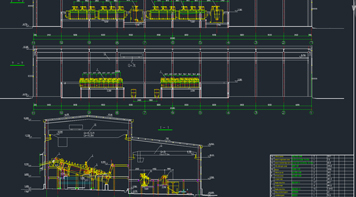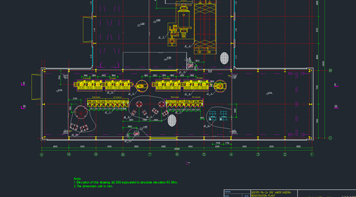The engineering design mainly consists of three parts: feasibility study, preliminary design and construction drawing design.
I Feasibility study
After reaching an agreement with customer, we start to organize a working team for the engineering design, including: planning, investigation, data collection, planning and optimization, project evaluation, report writing, and form a formal report after exchanging views with customer.
The working team requires divisions and cooperation from different specialities as follow.
1. Geological specialty. Collecting "Geological General Survey and Design", "Geological Survey (detailed survey) Report" or "Reserve Verification Report" and the approved documents.
2. Mining specialty.
Information collection:
–– Opinion and requirements of clients of mine construction;
–– The existing layout maps of exploration engineering;
–– Detailed knowledge of mining area’s terrain and surrounding environment conditions;
–– Design information of the preliminary design stage of mine.
3. Mechanical specialty. To Estimate the equipment quantity and specifications mine required by collecting mine information of lifting, transportation, pressure, drainage, etc. Providing scheme for equipments’ optimum utilization.
4. Civil engineering specialty.
Information collection including:
–– Investigation field geomorphic condition;
–– Hydrological data and "Geotechnical Engineering Investigation Report";
–– The local architectural style, structure, waterproof, thermal insulation and other building practices;
–– Construction material sources, transportation and price of the local building.
5. Electric power specialty.
Information collection including:
–– The electricity supply environment of mine;
–– Topography and geomorphology between ore area and current source;
–– The basic condition of transformer substation;
–– The requirements of local power supply department, such as power factor, power supply mode, the starting mode of large electrical equipment;
–– The local requirements of lightning protection and grounding;
–– The condition of external and local communication.
6. Beneficiation specialty. Information collection including: "Ore Beneficiability Test Report", plant topographic map (1:500, 1:1000), environmental protection requirements of water, electricity, tailings dam, the construction standards, the amount of investment and building opinion of owners.
7. General plan transportation specialty. Information collection including geographic and topographic data, social economy, weather, flood, engineering geology and hydrology geology, traffic, environmental protection etc.
8. Others information include tailings information, hydrometeor, drainage, HVAC, etc..
By the data collection and the feasibility study from the various professionals, a feasible plan for the plant construction would be finally made, and the "Feasibility Study Report " shall be submitted to the relevant departments.
II Preliminary design
After "Feasibility Study Report" approved, the design team starts the preliminary design and comes up with the design scheme of beneficiation plant construction. The design mainly involves: beneficiation, general layout, electric power, communication, civil engineering, environmental protection, water supply and drainage, tailings, safety and fire protection, investment estimates, economic benefit.
After the completion of the preliminary design, the design team will gather all contents to form the detailed “Preliminary Design Report ".
III Working drawings
When the preliminary design is approved, The design team starts to make working drawings. When the working drawings completed, the designers must hand the drawings over to the construction officers, especially give instructions about construction details.
 |  | |